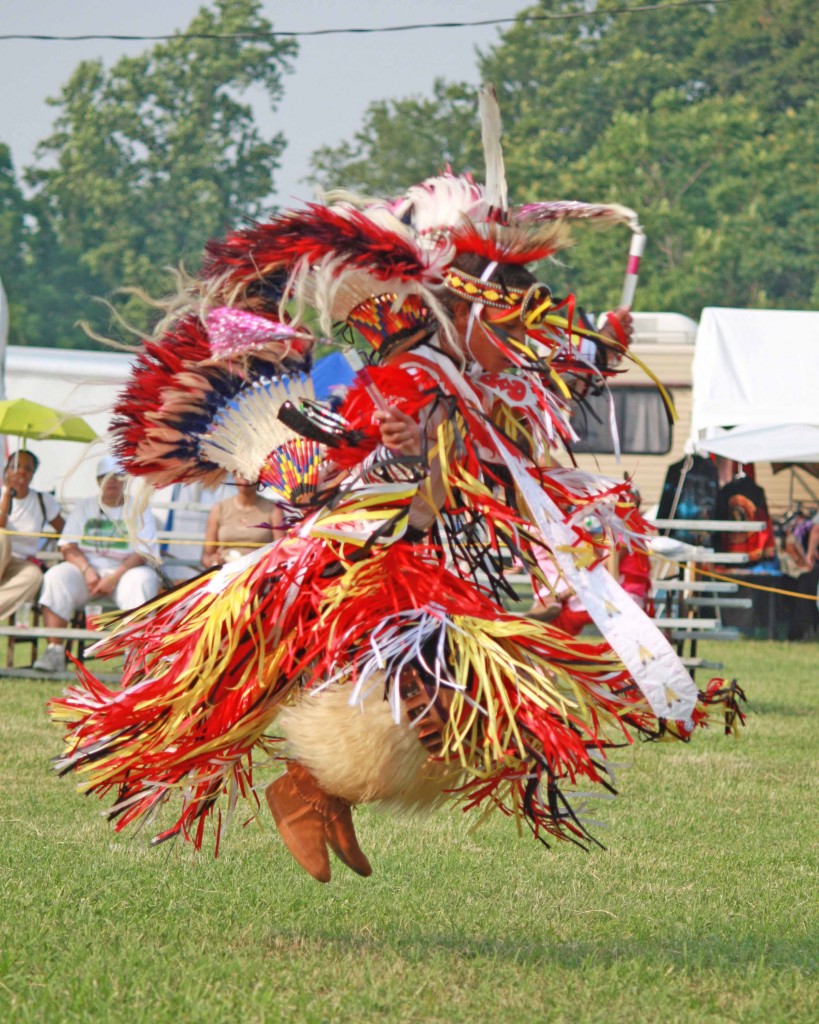World Views Information
Ceremonies
The Powwow
Powwows, also called Indian Days or Indian Celebrations, are usually held during July and August on reserves throughout Canada and the United States. Powwows have become a pan-Indian cultural movement throughout North America, and people travel hundreds of miles to attend. Those who travel from one powwow to another all summer long—usually traditional families or champion dancers—are said to be “on the powwow trail.”
Powwows bring together many different First Nations to celebrate their traditional heritage during three days of song and dance. The traditional powwow is conducive to reinforcing social bonds, spiritual beliefs and a common cultural heritage.The powwow setting is usually a huge encampment of tents, trailers and teepees around a main area called an arbor where food and craft booths are set up and where all the activities take place. Dance competitions, special dance demonstrations, naming ceremonies, feasts and giveaways take place each day following a sunrise ceremony. On the last day, the host nation or powwow committee shows gratitude to its visitors by conducting a giveaway.
Grand Entry
This beautiful parade of pride and colour starts off the powwow and each subsequent session of dancing. Preceded by the eagle staff, invited dignitaries and various categories of dancers join in the grand entry and dance to a special song rendered by the drum groups, following the path of the sun through the sky. The lineup is as follows: eagle staff; invited dignitaries; flag-bearers; dignitaries
and princesses; men’s traditional, jingle and fancy dancers; women’s traditional, jingle and fancy dancers; and youth and children in categorical order. Spectators should always stand and remove caps and hats during the grand entry, flag songs and invocation.
Honour Songs
As its name indicates, an honour song honours particular individuals for such things as respect for someone who has passed away, the return of a child to health after an illness or respect for an aged relative. Spectators should always stand and remove caps and hats when an honour song is performed.
 The Dances
The Dances
It is believed that most of the dances now being performed at modern celebrations evolved from a dance called the grass dance proper,which might have originated among the Pawnee or Ponca nations of the south central Great Plains. The dance was part of a series of dances connected to a three- and four-day ceremony honouring warriors for valour in victorious military excursions.
The most common dances are the grass dance and the crow hop, which originated among the Crow Nation of Montana; the chicken dance, which comes from the Blackfoot Nation; and the hoop dance, which is a specialty dance that originated
in the southwestern United States. The hoop dance used to be danced only by males but is now also being danced by females. The eagle and buffalo dances are also specialty dances.
It is only within the last 80 years that women have taken an active part in the grass dance. Traditional women’s dances include women’s traditional, women’s fancy and women’s fancy shawl. Women have also adopted an Ojibwa-inspired healing dance known as the jingle dress dance.
Group dancing has also come into vogue and someday may be a main part of these celebrations. All the dances are continually evolving, but dancers try to keep them true to their original form.